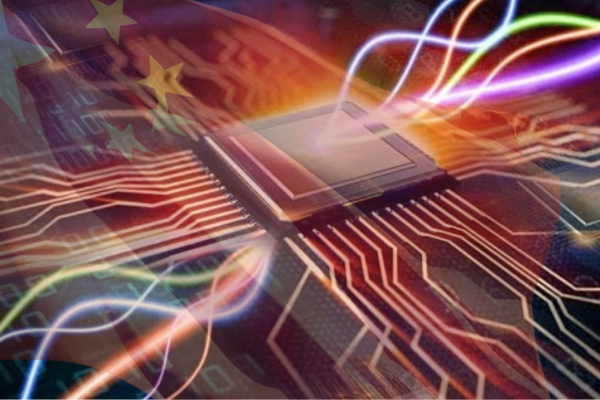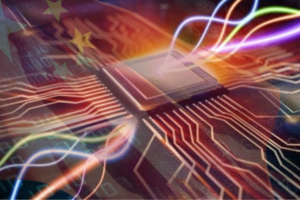China’s government-funded semiconductor lab announced that it has made new, never-before breakthroughs in the field of silicon photonics (SiPh) research. This innovation is known to enable the nation to overcome present technical obstacles in chip design and become self-sufficient amidst the tension growing for US sanctions.
According to a blog post the lab published lately, JFS Laboratory, located in Wuhan, the capital of central Hubei province and a national center for photonics research, was able to light up a laser light source combined with a silicon-based chip, the first time China got a success in this crucial research.
China has completed “one of the few blanks” in its optoelectronics technology, according to the accomplishment, official media People’s Daily said lately.
Silicon photonics uses optical signals for transmission rather than electrical ones. According to the lab, the transmission of electric signals between chips is getting close to its physical limit, therefore it attempts to address the limitations imposed by present technology.
Founded in 2021 with government funds of 8.2 billion yuan (US$1.2 billion), JFS is one of China’s premier organizations entrusted with the mission to explore technological advances.
The development of silicon photonics (SiPh), which is thought to hold the key to producing better processors for data and graphics processing as well as artificial intelligence (AI), has attracted the attention of major players in the worldwide semiconductor industry.
Businesses still encounter difficulties when trying to commercialize scientific discoveries.
A Fraction of Major Company in This Traction
One of the companies developing the technology is Taiwan Semiconductor Manufacturing Company, the leading contract chip manufacturer in the world. According to remarks made by Douglas Yu Chen-hua, the Vice President of the company, last year, a “good silicon photonics integration system” might solve important problems with computing power and energy efficiency in the AI future.
According to him, that development would cause a “paradigm shift” in the sector. The US chip design behemoths Nvidia and Intel, along with Huawei Technologies of China, are keeping a watch on developments in silicon photonics.
Global sales of silicon photonics (SiPh) chips are predicted by SEMI, an international association for the semiconductor industry, to increase from US$1.26 billion in 2022 to US$7.86 billion by 2030.
No Need for EUV Lithography?
In contrast to electrical chips, silicon photonics chips can be produced domestically using “relatively mature raw materials and equipment” without the need for expensive extreme ultraviolet (EUV) lithography machines, according to a 2022 quote from Sui Jun, president of Beijing-based semiconductor start-up Sintone.
Since small companies find it difficult to create these machines in large quantities, they are viewed as the weak point in China’s semiconductor industry. EUV machines are necessary for producing sophisticated chips. 2019 saw the Netherlands-based ASML, which essentially has a monopoly on these machines, cease exporting the machinery to China.
US-China Tech Competition
A report released in January by the US think tank Centre for Strategic and International Studies (CSIS) suggested that silicon photonics may develop into “an emerging front in US-China tech competition”.
According to a report by Matthew Reynolds, a former economics program fellow at the CSIS, “while the US-led export controls are likely setting back China’s capabilities in the manufacture of traditional chips… [they] could also inadvertently incentivize China to devote more resources to emerging technologies that will play an important role in next-generation semiconductors.”
This article originally appeared in the South China Morning Post (SCMP)
Why Big Chip Companies Are Chasing for Silicon Photonics (SiPh)?
Building photonic integrated circuits (PIC) for optical communication, fast data transfer, and photonic sensing devices is possible using the silicon photonics (SiPh) platform. A silicon-on-insulator (SOI) wafer serves as the substrate material for semiconductors.
Silicon (Si), which is transparent to infrared light, is utilized to fabricate components on a photonic layer using standard semiconductor manufacturing techniques. To provide a high refractive index difference, silicon dioxide (SiO2) or air is positioned around the silicon. This allows light flowing through the components to pass through the circuit with very little loss.
Compared to conventional photonics devices, on-chip photonic integrated circuits are far smaller, consume less power, and function at speeds of over 100 Gb/s, which allows for quicker and more effective information transport than electrical circuits.




